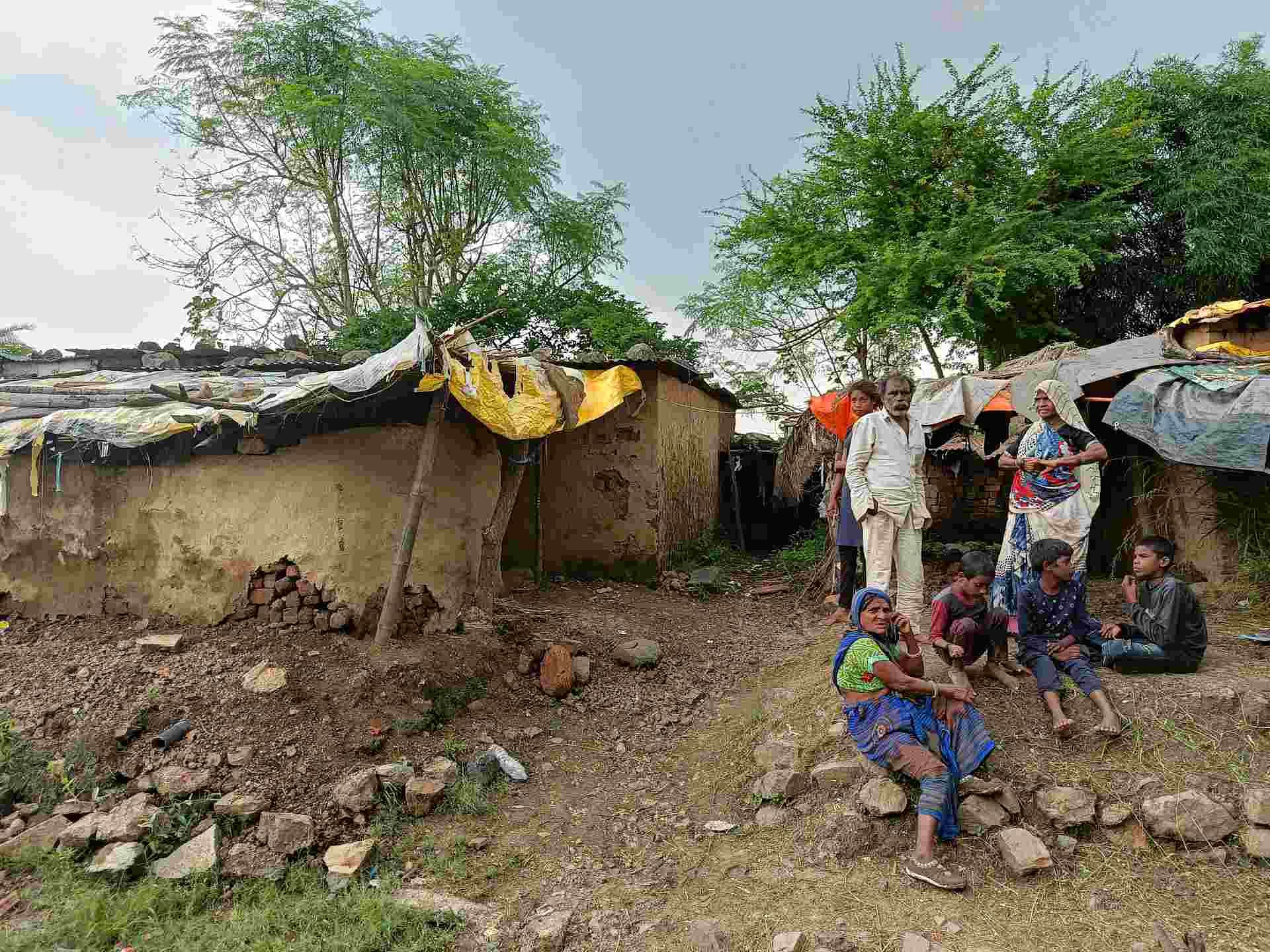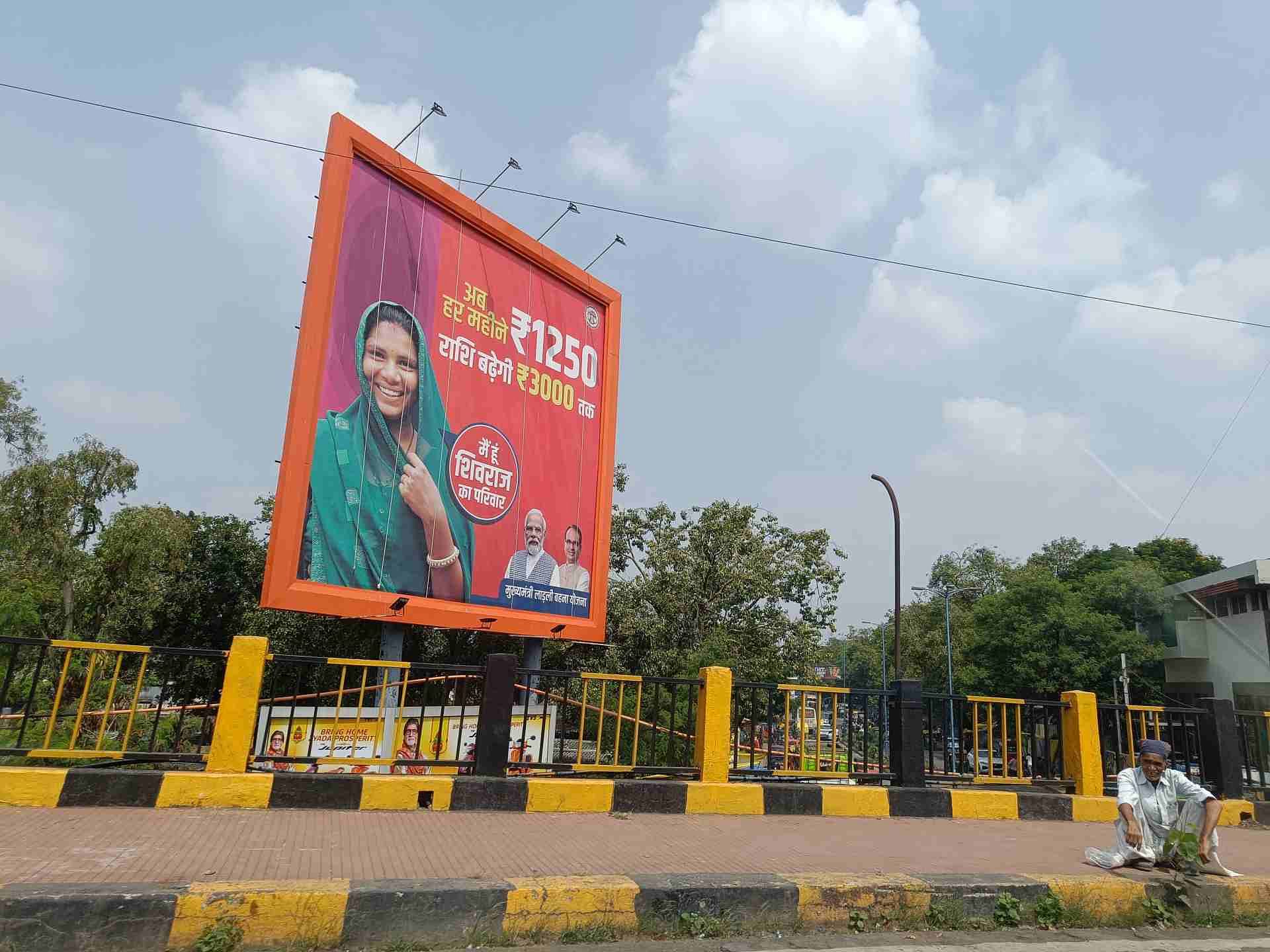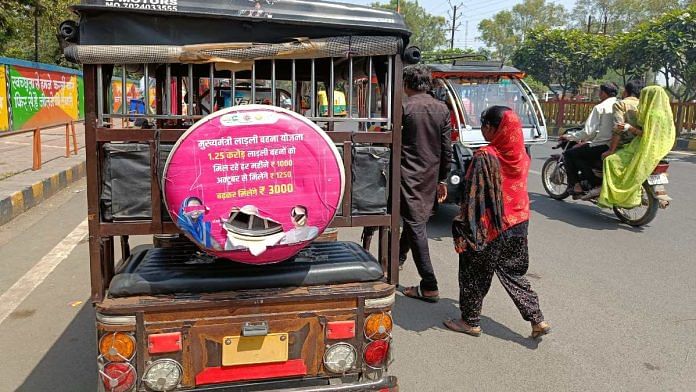Dhar/Ujjain/Indore/Bhopal: Dhapu, a 12-year-old who lives in the tribal-dominated Labrawada village of Madhya Pradesh, studies at a local government school. But that will change very soon, if her family has their way.
“After middle school, girls have to be sent a few kilometres from the village and the incidents happening with girls these days have increased our concerns,” says her mother Sushila. “As the girl grows older, our fear grows deeper. We will hardly be able to educate Dhapu further,” she adds.
Dropping out of school may still be a little ways away for the child, but it’s not like her education is treated as a priority even now.
Dhapu goes to school only occasionally, and most of her time is spent helping out at home and with farming.

“Here, girls are put to work at home so that more money comes into the house,” said Sona Bai, an ASHA (Accredited Social Health Activist) worker based in Labrawada, which falls in Dhar district. “Education is not given importance and they are married as soon as they turn 18,” she added.
Labrawada may be just one village in Madhya Pradesh, but its predicament finds resonance around the state, which features among the worst in terms of socio-economic indicators for women and girls.
According to the 2011 census, women’s literacy in MP stands at 59.2 percent, against the national average of 64.64 percent. In Labrawada, a village of 1,618 people primarily involved in agriculture and labour, the literacy rate of men is 83.06 percent, compared to 50.86 percent among women.
On indicators such as maternal mortality and years of schooling of women, too, the state is far behind the national average and neighbours Chhattisgarh, Uttar Pradesh, Maharashtra, Rajasthan and Gujarat.
Over the past two decades, Madhya Pradesh has shown high growth in agriculture. Although as much as 72 percent of the population is estimated to be dependent on farming, the gains don’t appear to have trickled down to its women.
Social experts say much of the poor living conditions of women in Madhya Pradesh can be blamed on the patriarchal nature of society.
Government officials say building a more equitable society has been a focus area, but speak of the challenges they face in implementing welfare programmes in a state where the vast majority still lives in rural areas.
Speaking to ThePrint, Rakta Bai, an ASHA worker since 2006, said “there is a lot of backwardness at the rural level”.
“People definitely have more money than before but women have still not become a priority,” she added.
“We give women information related to their health but they do not have money to spend on themselves. For the last few months, the government has been giving them thousands of rupees but it is spent only on household rations or children’s education.”
Amid the ongoing election season, women are being courted in a big way by the state’s Shivraj Singh Chouhan-led BJP government as well as the Opposition Congress with a welfare push.
One of the BJP’s primary campaign pitches is pegged on the Ladli Behna Yojana, launched in March 2023, under which eligible women beneficiaries (aged 21-60, if they meet certain criteria like household income) are given Rs 1,250 in their accounts every month (sum was Rs 1,000 until September).
The BJP has promised to increase the sum further if it returns to office. Meanwhile, the Congress has vowed to launch a similar initiative of its own in the state.
The state votes for its next government Friday.
Also Read: ‘BJP has many leaders more capable than me in MP. Party decides who does what,’ says Shivraj
Schooling for women
According to the latest National Family Health Survey (2019-2021, NFHS-5), only 29 percent of women aged between 15 and 49 years have completed 10 years of schooling in Madhya Pradesh.
The disparity is negligible among 6-14-year-olds, with 90 percent of children (boys and girls) in the age group enrolled in school. By age 15-17, however, the enrolment for girls drops to 50 percent, NFHS-5 data shows.
Mohammad Rafiq Khan, a primary school teacher in Bormundla village at Ujjain said the situation was particularly bad in villages.
“In rural areas, children are sent to school in the initial years, but as their age increases, they drop out,” he added.
“Boys go to the cities in search of jobs and girls are married at an early age. I have been watching this very closely for the last two decades,” he said.
Radheshyam, a broom maker from Khargone in his 40s, said he had one son and four daughters, two of whom were married at a young age because educating them wasn’t an option.
“We work as broom makers and earn Rs 200-250 a day. In such a situation, it was not possible to educate our daughters,” he added.
The ripple effects of poor education rates among women reflect in the fertility rate, among other things. NFHS-5 data shows the fertility rate is higher in less educated women.
Author Shirish Khare, who has written the book ‘Ek Desh Barah DuniyaI’ — a collection of reportage on rural India — said the condition of government schools in Madhya Pradesh was deplorable.
“Proper efforts were never made in the state to improve the basic infrastructure. If welfare schemes are not linked to the social structure, then how will the social indicators improve?” he said.
Only about 27.6 percent of MP’s population is believed to be living in urban areas, up from about 8.2 percent in 1911. This is cited by government officials as an impediment in the delivery of welfare measures.
“Still, 72 percent of the state’s population lives in rural areas and the state has 11 different climatic zones, and each has a different topography,” said a state government official.
“So, MP is a very complex state in terms of population settlement, which is the biggest challenge in the implementation of the social programmes,” the official added.
Health status of women
MP scored 37 in NITI Aayog’s 2019-20 Health Index, which seeks to aid state-level monitoring of performance and improvement in health outcomes. MP’s score placed it among the bottom three, above only Bihar and Uttar Pradesh.
Among its neighbours, meanwhile, Maharashtra scored 69, Gujarat 64 and Chhattisgarh 51. Only Rajasthan had a similar score at 41.
Another worrying statistic is that as many as 52.9 percent of pregnant women aged (15-49) were anaemic in MP, according to statistics presented by the Union health ministry in the Rajya Sabha last year. The World Health Organization (WHO) says anaemia during pregnancy “has been associated with poor maternal and birth outcomes”.
The percentage of mothers receiving at least four antenatal care visits (widely recommended as the bare minimum required) in MP in 2021 was 57.5 percent, against 76.9 percent in Gujarat, 70.8 percent in Maharashtra and 60.1 percent in Chhattisgarh, NFHS-5 data shows. The figure was 55.3 percent for Rajasthan and 42.4 percent for UP. Among the 18 larger states (by population), MP was ranked 13th.
MP has a Maternal Mortality Ratio (MMR, no. of maternal deaths per 1 lakh live births in a given period) of 173, far above the national average of 97 and the second-worst after Assam (195), according to the Sample Registration System (SRS) report 2016-18 by the Registrar General of India. However, it marks an improvement over MP’s 2007-09 MMR of 269.
Talking about the statistics, Khare said society in Madhya Pradesh is feudal in its basic nature.
“Unlike Uttar Pradesh and Bihar, there was never any talk of social justice in Madhya Pradesh. Nor does the social structure in the state seem to be collapsing,” he added.
Rajesh Gautam, an anthropologist at Sagar-based Hari Singh Gaur University, said the “condition of health and education is bad in MP” overall, adding that this underlies the poor indicators seen among women.
“The amount of investment that should have been made in these two sectors has not been done as per the requirement,” he added.
Gautam said the condition of government schools is worsening, while there is a huge shortage of doctors in the state.
“Social indicators can be improved only by making better investments in education and health, but the motive of the governments has been vote-bank politics and not human development,” he said.
Also Read: The real question in Madhya Pradesh polls no one is asking. No, not the Congress-BJP margin
Violence against women
NFHS-5 data shows that 31 percent of women between the age of 18 and 49 had been physically or sexually abused in Madhya Pradesh.
While MP has the fifth highest population, it reports the highest number of rapes (not by share of population, in absolute numbers) — 6,462 — according to data from the National Crime Records Bureau (Disclaimer: Higher statistics for a state in NCRB may also indicate better reporting of crimes).
MP also has the second highest cases of missing women after West Bengal. According to the National Crime Records Bureau (NCRB) 2021 report, the state had not been able to trace 36,104 missing women, including 2,830 minors.
Professor Mamta Chandrashekhar, head of the Department of Political Science at Indore-based Atal Bihari Vajpayee Arts and Commerce College, said there was a lot of social and mental backwardness in Madhya Pradesh.
“Compared to other states, the women of Madhya Pradesh appear to be lagging behind on many levels,” added Chandrashekhar, who has been working on women’s issues for a long time.
“The number of women in decision-making is very less here,” she said. “Crimes related to women are increasing in Madhya Pradesh. How will social indicators be corrected in such a situation?”
An official of the state health department acknowledged more work is needed, but noted that there has been progress.
“Apart from agri growth, our focus is also on social indicators,” the official said. “We know that we need to do more to improve the indicators related to women compared to the country and other states. But in the last two decades, we have continuously made progress in this direction and the figures have improved.”
Social security schemes
According to the 2022-23 Madhya Pradesh economic survey, the state has invested a lot towards ensuring equity within the social structure over the last decade and a half.
“The performed efforts & work are now showing results in the form of positive changes in the life of the poor, marginalised section and women,” it says.
The survey also hailed schemes like Ladli Laxmi Yojana, which seeks to ensure women empowerment and education through regular financial assistance, and Sukanya Samriddhi Yojana, a central government deposit scheme for the girl child, for making an impact on the condition of women, citing NFHS-5 data.
For example, it notes, the sex ratio of girls has gone up to 956 under NFHS-5 (2019-21) from 927 during the period covered by NFHS-4 (2015-16).
The Shivraj Singh Chouhan government — Chouhan has now been CM for 18 years — has made a big deal of its Ladli Behna Yojana, which targets an estimated 1.25 crore beneficiaries.
From urban to rural areas, posters and hoardings promoting the scheme have been put up across the state with the message “Shivraj bhaiyya ki madad se badal raha bahano ka jivan (Shivraj bhaiyya’s help is changing the lives of sisters)”.

However, writer Shirish Khare said unless money has a social basis, it cannot benefit people’s lives.
“The government is talking about improving the condition of women by giving money under the Ladli Behna Yojana, but free money does not change the social situation. For this, there is a need to increase participation of women,” he added.
Khare said NREGA — the rural employment guarantee scheme — was an example of a scheme with a social base as it assured money in exchange for work.
But a scheme like Ladli Behna “is just to create a labharthi varg (beneficiary class)”, he added.
“There seems to be a lack of long-term policies to improve the condition of women in the state. Ladli Behna is not a visionary plan,” he said.
Chandrashekhar dismissed the scheme as “votebank politics”. “This will not empower women but will make the workforce even more lazy. If the condition of women is to be improved, the government will have to work at the policy level,” she said. “Although changes have been seen in the last few years, they are inadequate,” she added. “To empower women socially, there is a need to provide them better education and opportunities. Freebies provide temporary benefits, but society, including women, has to suffer long-term losses.”
This is an updated version of the report
(Edited by Sunanda Ranjan)
Also Read: Ladli Behna scheme has women rallying behind Shivraj, but not all men are happy



